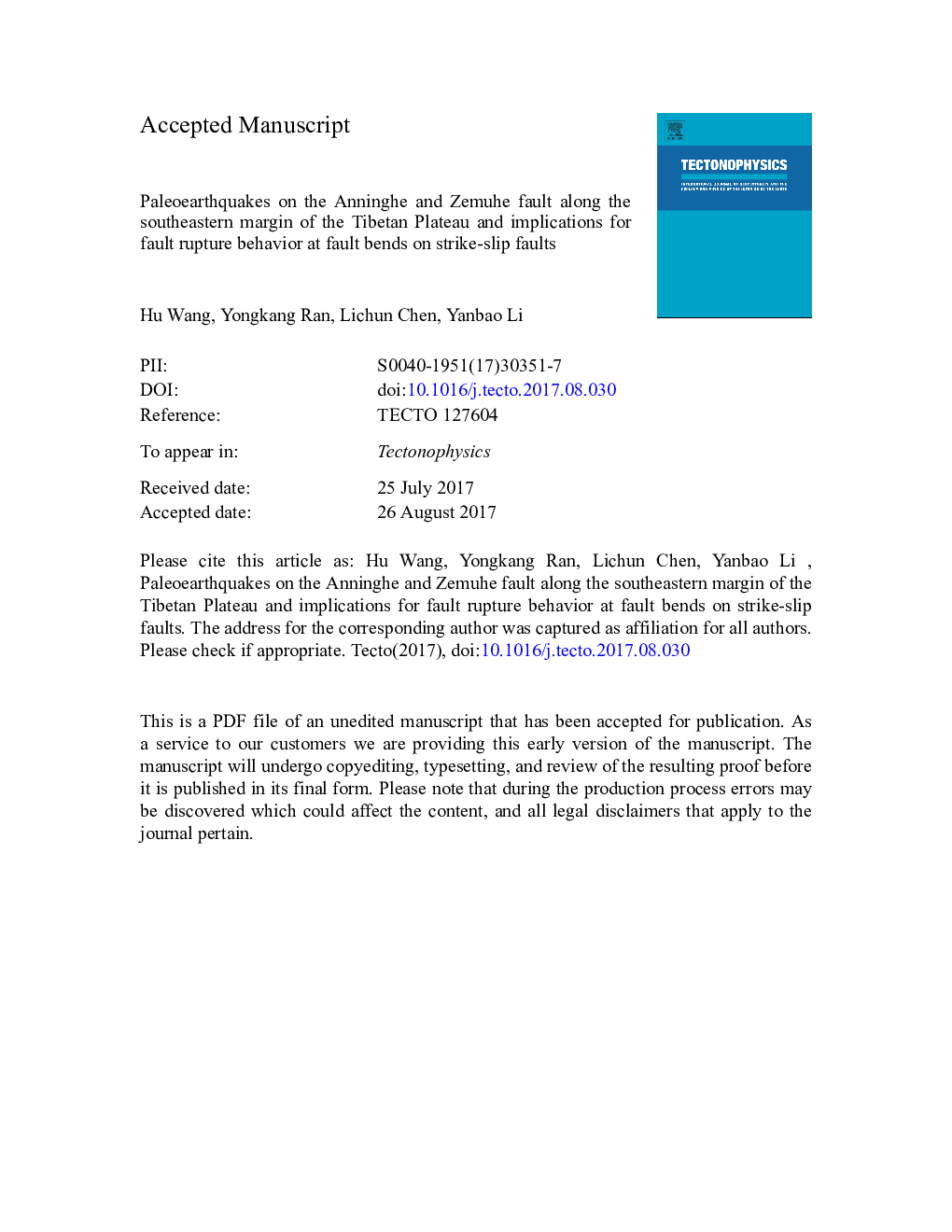| Article ID | Journal | Published Year | Pages | File Type |
|---|---|---|---|---|
| 5781445 | Tectonophysics | 2017 | 35 Pages |
Abstract
Fault bends can serve as fault segment boundaries and are used in seismic hazard assessment. Recent studies addressing whether rupture propagation would be arrested at such structural complexities have commonly focused on computational modeling. However, multi-cycle paleoseismic rupture observations through fault bends have seldom been reported. In this study, we used trenching and radiocarbon dating to reveal paleoseismic rupture histories on the southern segment of the Anninghe fault (ANHF) along the southeastern margin of the Tibetan Plateau to explore multi-cycle surface rupture behavior at an extensional fault bend (with an angle of about 30°) at Xichang between the ANHF and Zemuhe fault (ZMHF). Specifically, nine trenches were opened in a fault depression at Maoheshan site and five paleoseismic events were identified. These have been named E1 through E5 respectively corresponding to events at 1400-935 BCE, 420-875 CE, 830-1360 CE, 1295-1715 CE, and 1790 CE-Present. After comparison with the historical records of earthquakes around Xichang and previous paleoseismic results, we suggest that the five seismic events are constrained at: 1365 BCE-935 BCE, 814 CE, 950 CE- 1145 CE, 1536 CE and 1850 CE, respectively. The average recurrence interval of earthquakes along the southern segment of the ANHF is about 700-800 yr. Furthermore, the evidence indicates that surface-faulting events along the southern segment of the ANHF appear to be unevenly spaced in time. Moreover, based on comparisons of seismic events along the ANHF and ZMHF, we find that two fault segments simultaneous ruptured during the 814 CE and 1850 CE earthquakes, event E3 and the 1536 CE earthquake ruptured the ANHF but not rupture the ZMHF. We suggest that the Xichang fault bend is not a persistent fault boundary, indicating that extensional fault bends with an angle of about 30° may not effectively terminate seismic ruptures on strike-slip faults.
Keywords
Related Topics
Physical Sciences and Engineering
Earth and Planetary Sciences
Earth-Surface Processes
Authors
Hu Wang, Yongkang Ran, Lichun Chen, Yanbao Li,
